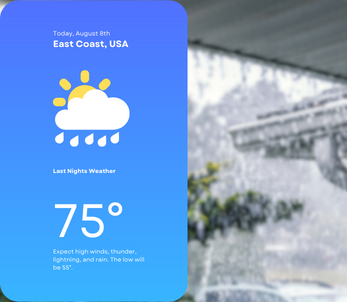The Ultimate Guide to Fire Extinguishers: 5 Questions and Answers
How many people have ever thought about using their fire extinguisher before a fire actually occurs? Not many we would assume. It is important to practice this in case of an emergency! Don’t wait until the fire has sprung up to wonder about fire extinguishers. Here’s what smart homeowners (and renters) need to know.
Question #1: Do I Need A Fire Extinguisher?
Answer: Yes.
The minimum number of fire extinguishers you should have is one. But the National Fire Protection Association recommends you have a fire extinguisher on each floor. You should place your fire extinguishers either near an exit or in an easy-to-grab spot.
Question #2: Do I Need A Fire Extinguisher if I am a Renter?
If you are a renter, your landlord is normally responsible for providing smoke detectors in each unit – but not necessarily fire extinguishers. This can depend on your state and local fire codes, so it is important to ask your building manager or landlord to be sure. And don’t panic if they say no! Fire extinguishers typically run from $20 to $70, depending on the type so it won’t be a large expense.
Question #3: What are the different types of Fire Extinguishers?
Believe it or not, there are different types of fires and they require different types of fire extinguishers. You can tell the different by looking for the letters A, B and C on the label. These letters refer to the different types of fire the extinguisher is capable of putting out.
Class A extinguishers are effective on fires in paper, wood, textiles and plastics. (Think “A” for “ash.”)
Class B extinguishers are effective on liquid fires, like those involving cooking oil, paint, gasoline or kerosene. (Think “B” for “barrel.”)
Class C extinguishers are effective on electrical fires and live wiring. (Think “C” for “current.”)
The best choice for your home is a multi-purpose extinguisher like ABC, which can be used on all types. You can opt for a single-use or a rechargeable model. A rechargeable fire extinguisher is filled with either water or a powdered chemical—check your extinguisher’s label to see what to refill yours with.
Typically, fire extinguishers are sold in 2-pound, 5-pound or 10-pound canisters. Larger sizes pack more punch, but choose a size that you can lift easily. If it’s too heavy, you’re not doing yourself any favors.
Question #4: How Do I Use a Fire Extinguisher?
The first thing you should do when you see any fire of any size in your home is call 911. Remember that fire spreads rapidly and your priority is keeping you and your family safe. But you can safely extinguish the fire yourself here is an acronym you can use to remember
PASS:
- Pull the pin. Grab the extinguisher, point the nozzle away from you and release the locking mechanism.
- Aim low, pointing the extinguisher at the base of the fire.
- Squeeze the lever slowly and evenly.
- Sweep the nozzle from side to side.
Use your extinguisher on a small fire that’s not growing – for example, a fire contained in a wastebasket. When fighting the fire, keep your back to a clear exit so you can make an escape if you need to. If the room fills with smoke or the fire grows, leave immediately.
Question #5: When To Replace A Fire Extinguisher
Believe it or not, fire extinguishers don’t last forever. This is because they can lose pressure over time and stop being effective. Even if no expiration date is listed, most models last between 5 and 15 years.






